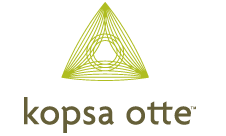Q: We are wondering
if it makes sense to buy additional stock of product lines that we carry before
a price increase takes effect given the fact that it will increase our
inventory at the end of the year. Is there any way around this now that we are on
an accrual basis?
A:
Inventory at
year end is a question that a lot of people have. For some reason many people think that if
their inventory is high they will have to pay more in tax. That is just not true. I think the reason that people have this
misconception is that if you overstate you inventory then, working through the
calculation of cost of sales, you will be understating your cost which brings
your income up and therefore your taxes up.
The opposite is true if you understate your inventory.
Here
is an example:
A
business has a beginning inventory of $90,000; sales of $500,000; purchases of
$250,000 and ending inventory of $75,000 their calculation of gross profit
would look like this:
Let’s change the facts a little. Let’s assume that the owner finds a deal on
inventory and purchases $30,000 on inventory before the end of the year. This inventory has not been sold and is still
on the shelf. Whether the owner paid
cash, credit card or still owes for the inventory what would happen is that
purchase would go up and ending inventory goes up so therefore no change in the
bottom line. The statement would look
like this:
I think here is where the confusion
comes in. What if, going back to our first
example with the ending inventory at $75,000, what if the owner miscounts and
says that the ending inventory is $85,000, $10,000 higher than actual? That is where there is a problem. In that case the cost of sales would be lower
and therefore the income mistakenly higher.
For example:
Let’s keep going. This is true for retail sales for both cash
and accrual basis taxpayers. If cash
basis taxpayers purchase inventory and include the amount in ending inventory
they should record the payable even though they are cash basis. There is a difference in back bar supplies
for cash basis taxpayers. Cash basis
taxpayers do not have to inventory back bar supplies. They can write them off when they write the
check or pay by credit card.
I
hope that this is helpful.











